Syn.: Iris humilis subsp. arenaria (Waldst. et Kit.) Á. Löve et D. Löve, nom. inval., Iris humilis subsp. stolonifera (Ugrinsky) D. A. T. Webb et Chater., Iris pineticola Klokov, Iris flavissima Pall.
Family: Iridaceae Juss.
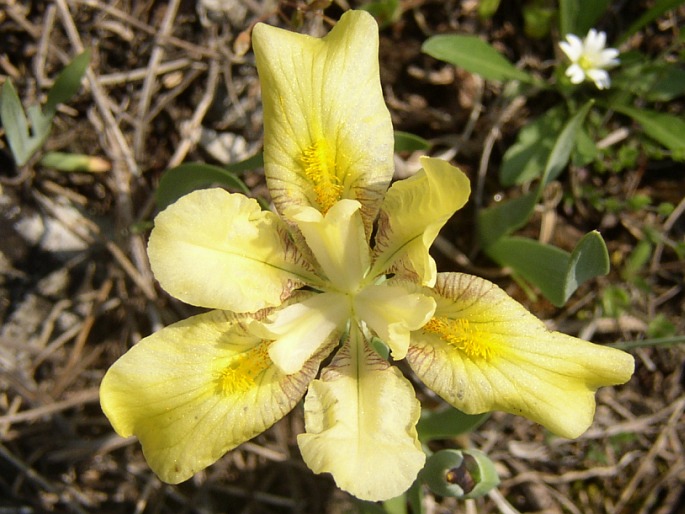
Distribution: A Pontic-Pannonian species – southeastern and southern part of Central Europe. The northern boundary of the area of distribution runs through the Czech Republic (southern Moravia).
Ecology: It grows in sunny rocky steppes and on stony slopes, from lowlands to highlands. It blooms in April and May, its flowering period is short, each flower lasts only one day.
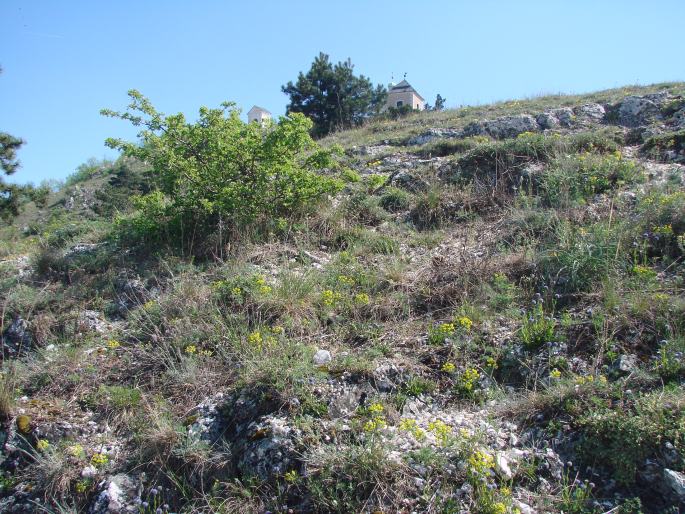
Description: Perennial herb with a slender rhizome. Stem erect, simple, 5–12 cm tall. Leaves 5–17 cm × 1,5–6(–8) mm. Flowers 1–2, yellow with purple veins, the falls 30–35 mm long, suborbicular, with a distinct claw, and with a beard of hairs, the standards 27–33 mm, oblanceolate, with a short claw. Fruit is a capsule, seeds with a conspicuous circular aril.
Threat and protection: Sandy Iris is an endangered and protected species in Czechia, Slovakia, Hungary and Serbia.
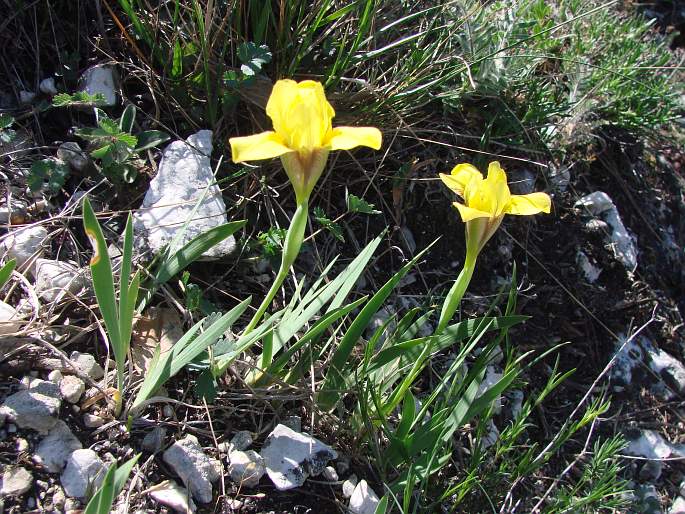
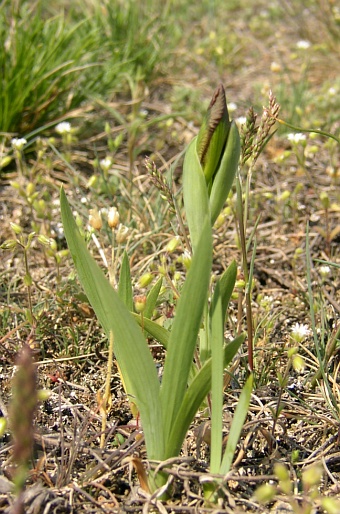
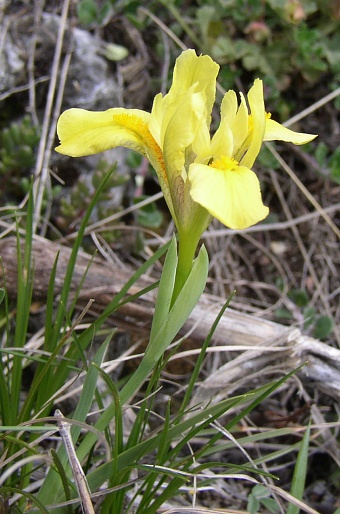


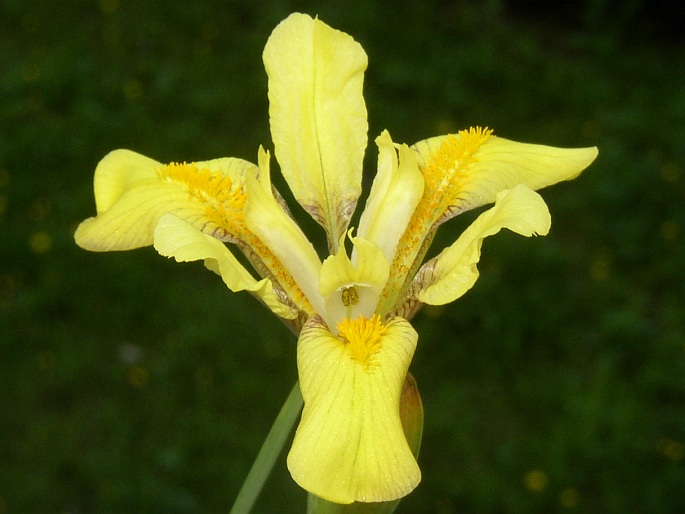
These images were taken in Czechia, Moravia, Mikulov (28. and 30. 4. 2004, 22. 4. 2009).


